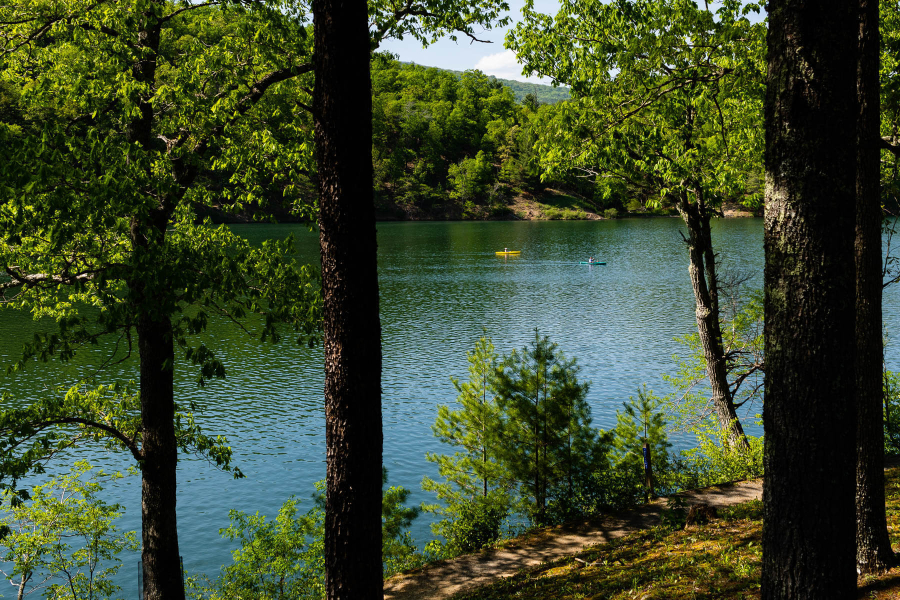Annual Bay report card notes overall watershed health is faring better than the Bay itself
Researchers include new indicators to provide an expanded, holistic view of watershed health

According to the 2019 Chesapeake Bay Watershed Report Card, health of the Chesapeake Bay declined for the second year in a row while the overall watershed—assessed for the first time this year—is in a relatively better condition. The report card was issued by the University of Maryland Center for Environmental Science (UMCES) and features several inaugural research components that provide a more holistic, inclusive evaluation of the Chesapeake region.
Overall, the Chesapeake Bay scored a 44%, the lowest score and first C- since 2011, with a changing climate as the culprit. Higher-than-average temperatures lowered dissolved oxygen levels, damaged underwater grasses and decimated benthic macroinvertebrates (organisms like snails, mussels and insects that live at the bottom of the Bay and its streams and rivers). Extreme and severe periods of rain increased pollution from run-off while lingering effects from the record rainfall in 2018 may also have had an impact.
Despite low scores, long-term trends showed improvement. Six regions are showing significant positive trends over time. In Maryland, that includes the Upper Western Shore, Patapsco and Back rivers, Lower Western Shore and Lower Eastern Shore; while in Virginia, the Elizabeth and James rivers showed improvement. Overall, the Bay is showing a slightly improving trend.
“The Chesapeake is resilient and while the health score fell due to the intense rainfall and elevated temperatures, we are seeing trends that Bay health is still improving over time,” said Dr. Bill Dennison, vice president for science application at UMCES.
In comparison, the watershed, which encompasses a much larger stretch of territory than just the Bay, scored a B- (60%) in 2019. The highest scoring region was the Upper James in Virginia (72%), with the Lower Potomac in Virginia and Lower Western Shore in Maryland just slightly behind (both 71%).
The lowest scoring region of the watershed was the Lower Eastern Shore (42%), followed by the Choptank (47%), both in Maryland, and the Elizabeth River, in Virginia (52%). The data also show that more forested regions tended to have better scores, revealing the critical value of forest buffers.
UMCES evaluates the health of the Bay using seven different indicators: benthic communities, dissolved oxygen, total phosphorous, water quality, chlorophyll a (a measure of algae growth), total nitrogen and aquatic grasses. These indicators make up the Overall Health Index, but researchers also look at other factors such as striped bass, bay anchovies, protected lands, turbidity (a measure of water clarity), stewardship, social index and blue crab populations. These indicators are measured across fifteen regions. Together, they aid researchers, policymakers and others that look to extend protection and restoration efforts throughout the entire watershed.
“The Bay will only heal itself when we continue to invest our collective time, energy and research across the Bay watershed,” said Jake Reily, director of Chesapeake Bay programs at the National Fish and Wildlife Foundation.
Another inaugural indicator was the Social Index score, which evaluates the social vulnerability of the 18 million people who live in the watershed. According to researchers, social vulnerability refers to how resilient a community is to hazardous events such as natural disasters, and was measured by factors such as socioeconomic status, household composition, diversity, minority status, language, housing and transportation.
“In general, people don’t reach for conservation unless their basic needs are met,” said Ann Swanson, executive director of the Chesapeake Bay Commission, on the importance of socioeconomic indicators.
Kate Fritz, executive director of the Alliance for the Chesapeake Bay, echoed the value of community health and well-being, “The brightest future for the Chesapeake Bay watershed is one where a diverse set of beliefs and perspectives are taking action in their own communities toward our common goal of cleaner water for all.”
Though not included in this year’s report, additional indicators such as outdoor recreation, land conservation and citizen stewardship are being researched and UMCES intends to include them in the next report card. Should the Bay’s health improve by 2021, it’ll be due in large part to the ways in which UMCES and other organizations are broadening their research efforts and bringing additional perspectives to the table.

Comments
There are no comments.
Thank you!
Your comment has been received. Before it can be published, the comment will be reviewed by our team to ensure it adheres with our rules of engagement.
Back to recent stories